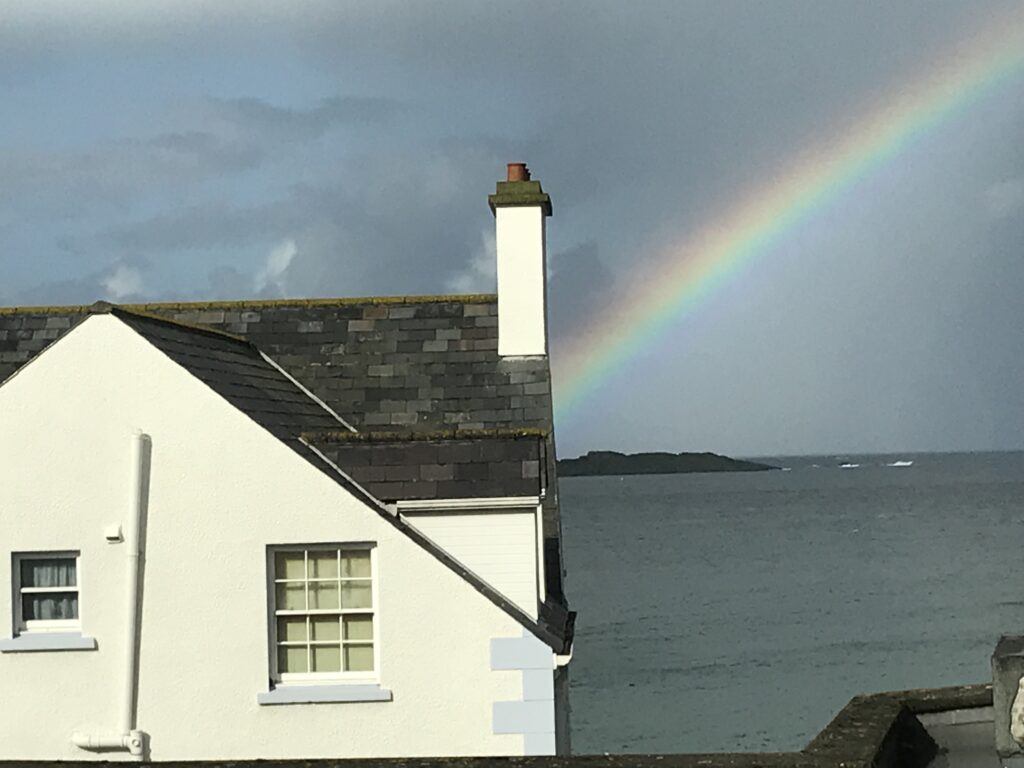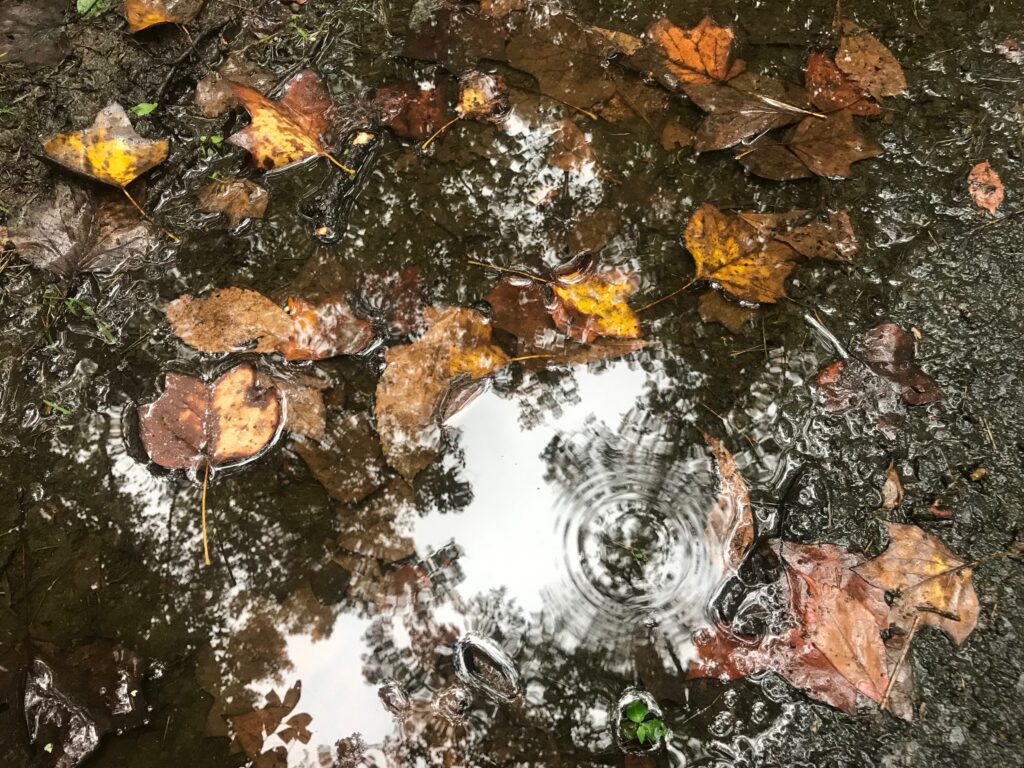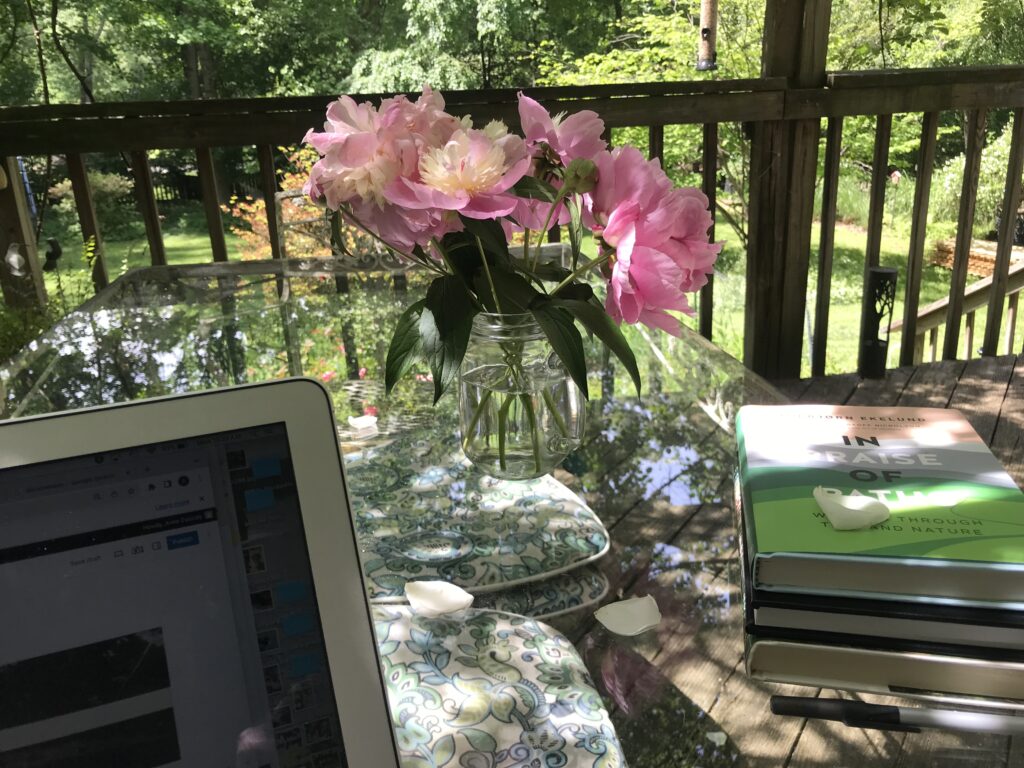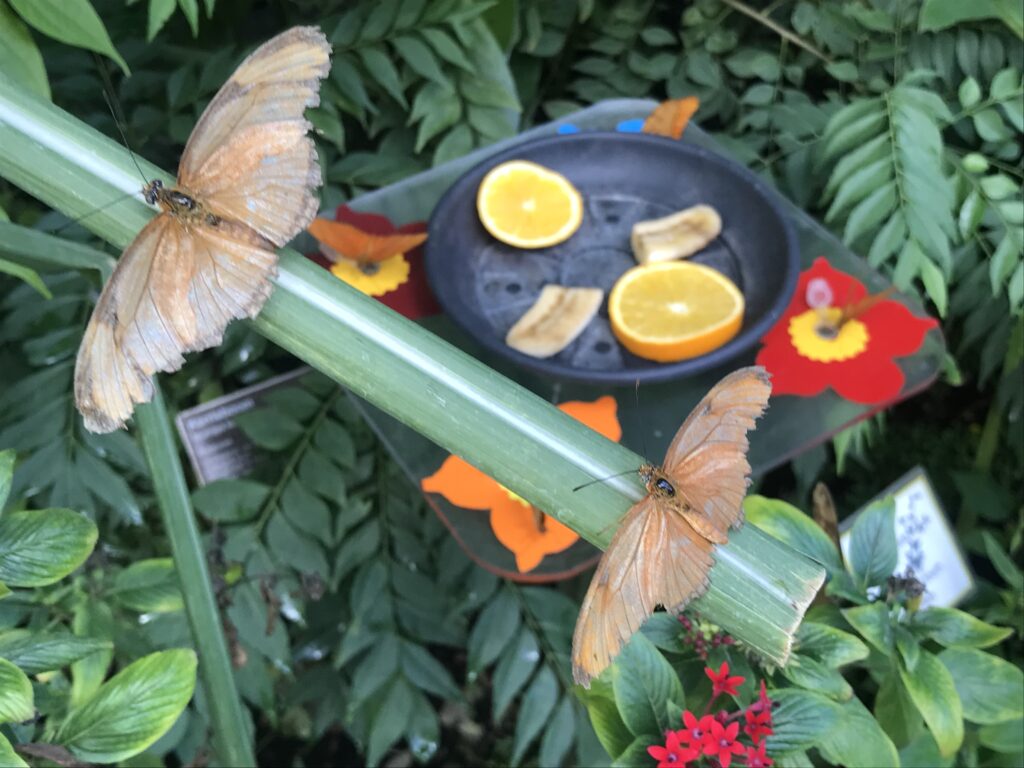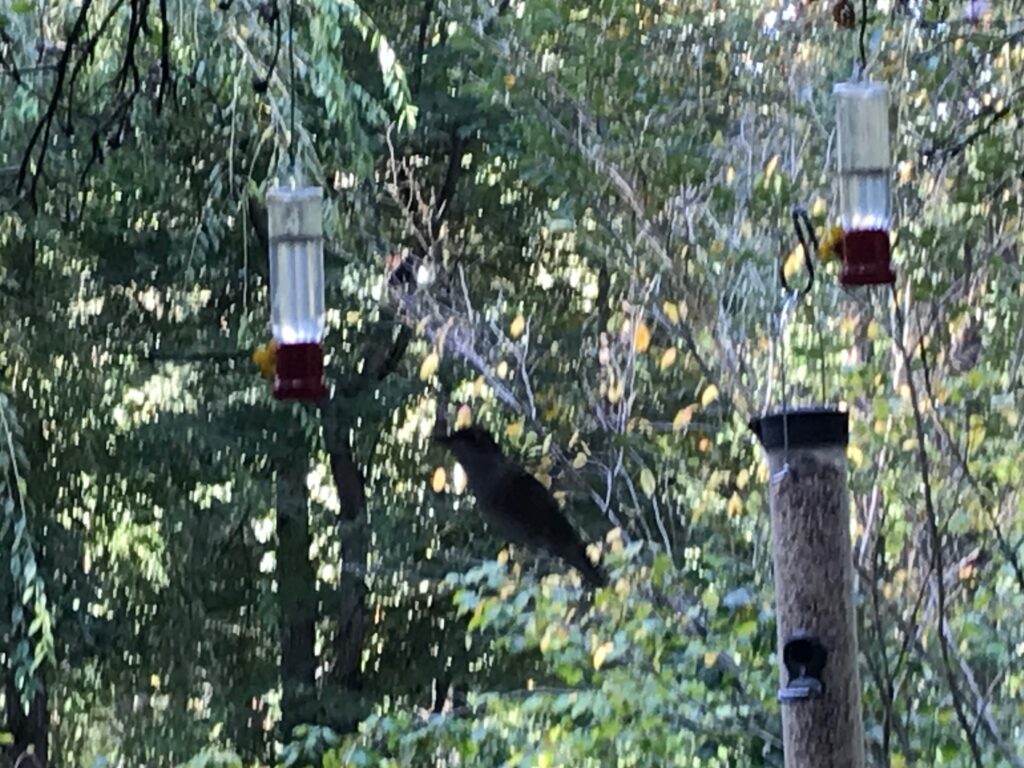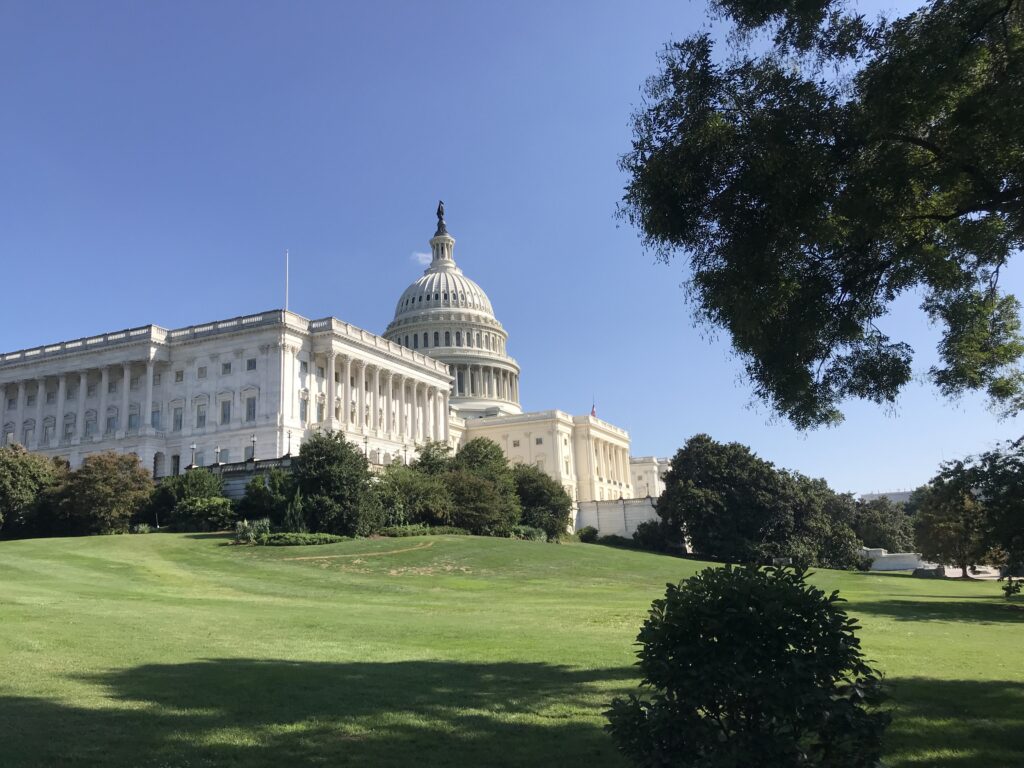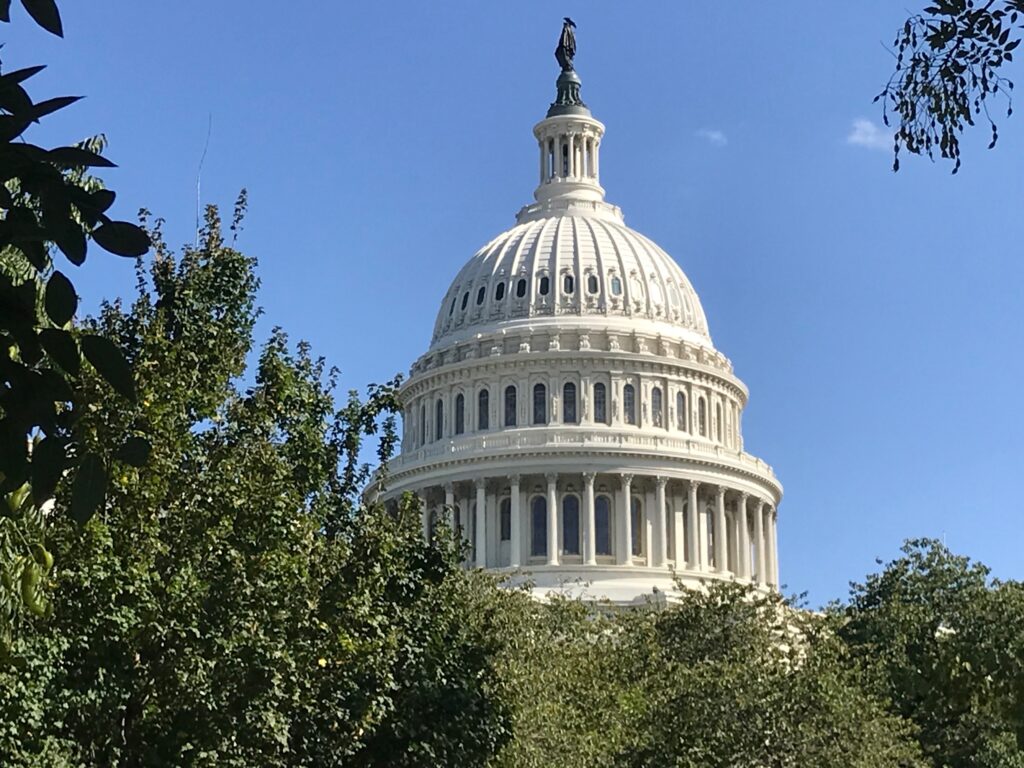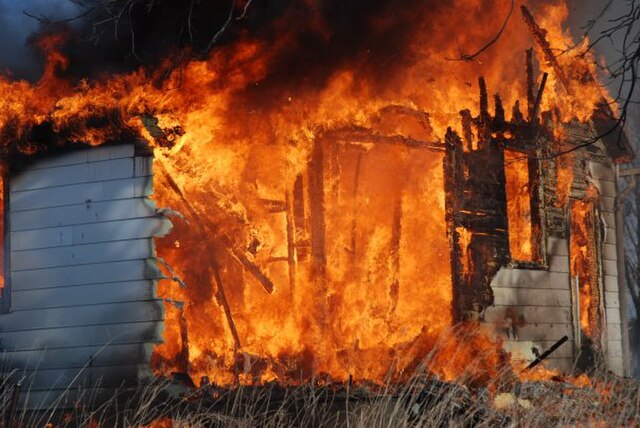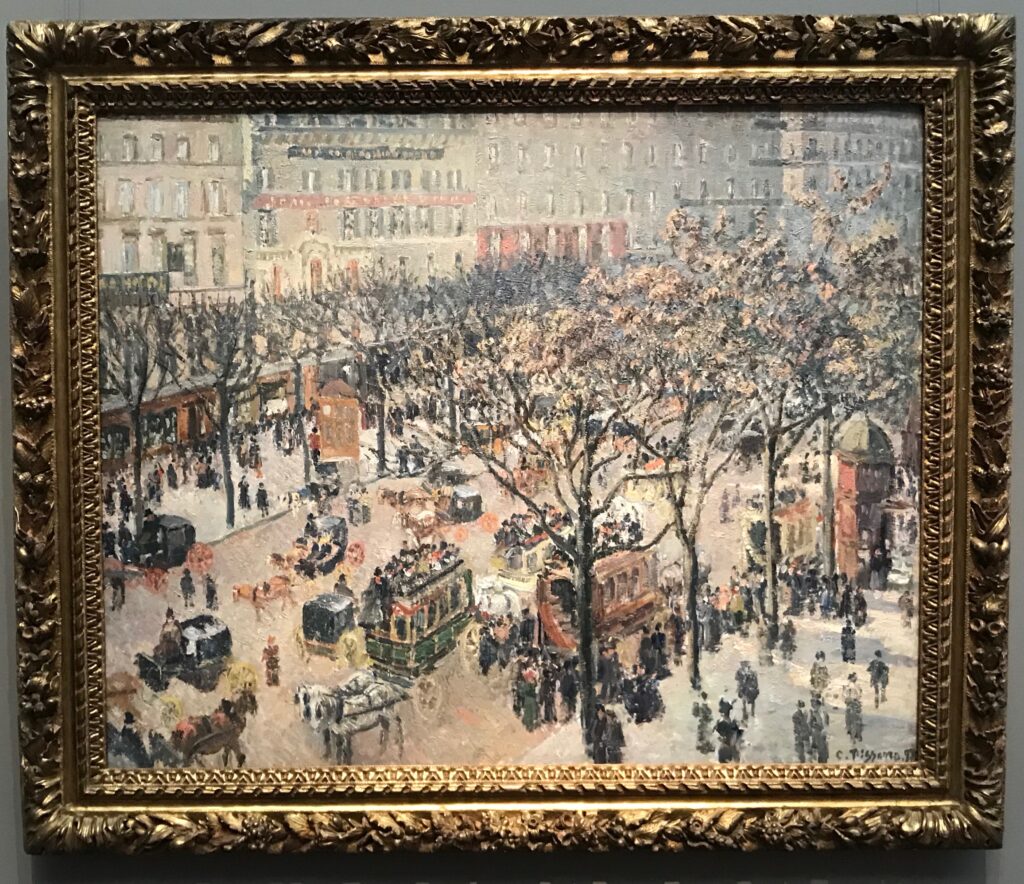Bridge to Somewhere
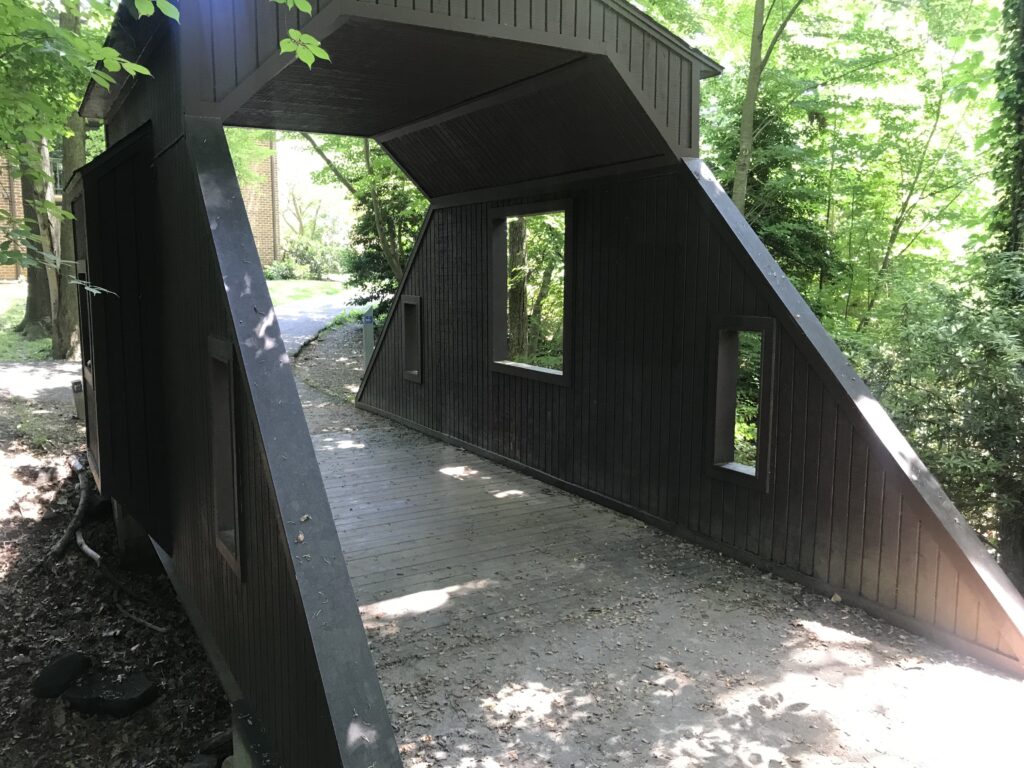
Yesterday I slipped out between the raindrops for a walk around Lake Anne. This is one of my favorite Reston walks, one I often take with a good friend, though sometimes I do it solo after my yoga class.
This bridge is on that route, a bridge to nowhere, you might think, though that wouldn’t be exactly right. It’s only a short pedestrian bridge, doesn’t span a great river or even a shallow canal, but it brings me full-circle from the community center, where my yoga class is held, back to my car. A bridge to somewhere, after all.
On the way I pass gardens, kayaks, rock sculptures, a cafe and a bookstore. The best walks are like this, I think. They combine natural features — woods, fields and streams — with signs of human habitation: houses, stores, cafes. And then there are bridges. A good walk might include one of those, too.
